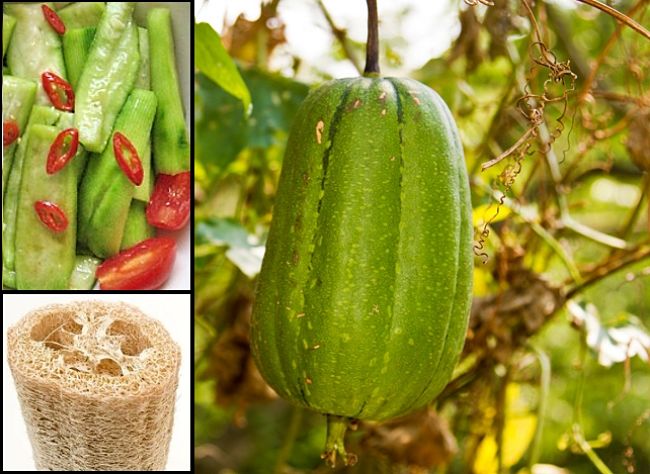Planting and Growing Guide for Luffa (Cucurbitcaea)
Description
Luffas or Loofaha are best grown as a summer annual for their edible vegetables that resemble zucchinis. Luffas belong to the cucumber family and is a type of squash. In warm tropical areas grow vigorously, but in cooler areas they make need to be grown in a glass house. Sow Luffa seeds in spring, in the garden after all chances of frost have passed. You can grow them earlier in seed trays protected from frosts, planting out after 4-6 weeks. Luffas do best rich and moist, freely draining soil. They need a sturdy support on which to climb. When the vines get to the top of their support, pinch out the growing tip to encourage side growth. Weave the side shoots into the frame to encourage the spread. Luffas are less susceptible to powdery mildew than other members of the cucumber family. Pick mature fruit regularly to encourage additional cropping. Large Luffa fruits when dried, make great back scratchers. They can be cut into many shapes and used as scrubbing pads, padding, and other uses. This is why Luffa are known as Plant Sponge. Luffa is claimed to have medicinal benefits as well.
To prepare the Luffa or Loofah for cooking, break off the stems. The outer skin comes away quickly.
Planting Guide
Seed Depth: Grow in seed trays in areas with frosts or sow directly into the garden bed after the last frosts. Sow about 10 mm (1/2 inch) deep.
Space between plants: Space plants about 50-80 cm (2-3 inches) apart. Support is needed.
Harvest Time: Harvest in about 11-12 weeks. Small fruit can be picked earlier
Hints:
- Do not eat the leaves and vines
- Luffa plants need warmth to grow successfully
- Regular watering is required, especially in hot weather
- They grow on spreading vines similar to cucumbers
- Add mulch around the plants to conserve moisture and keep the soil temperatures warm.
- Needs a soil rich in organic matter, so add well-rotted compost or manure
- You can use young Luffa fruits to make pickles as you would gherkins.
- Luffa can become an invasive weed, so only grow as an annual and dispose of the seeds from pods you dry or eat. Collect and dispose of pods you don't use.

Disclaimer: The PlantWhatWhen vegetable planting guide is only designed for use as a very general reference for home gardening purposes. It is not to be used for farming, markets or commercial activities of any kind whatsoever. We take absolutely no responsibility for the accuracy and adequacy of the information provided on this site. We recommend that you consider your local climate, weather patterns and conditions when deciding what and when to plant in your home garden. It's entirely your own decision. Happy Gardening and Best Wishes!